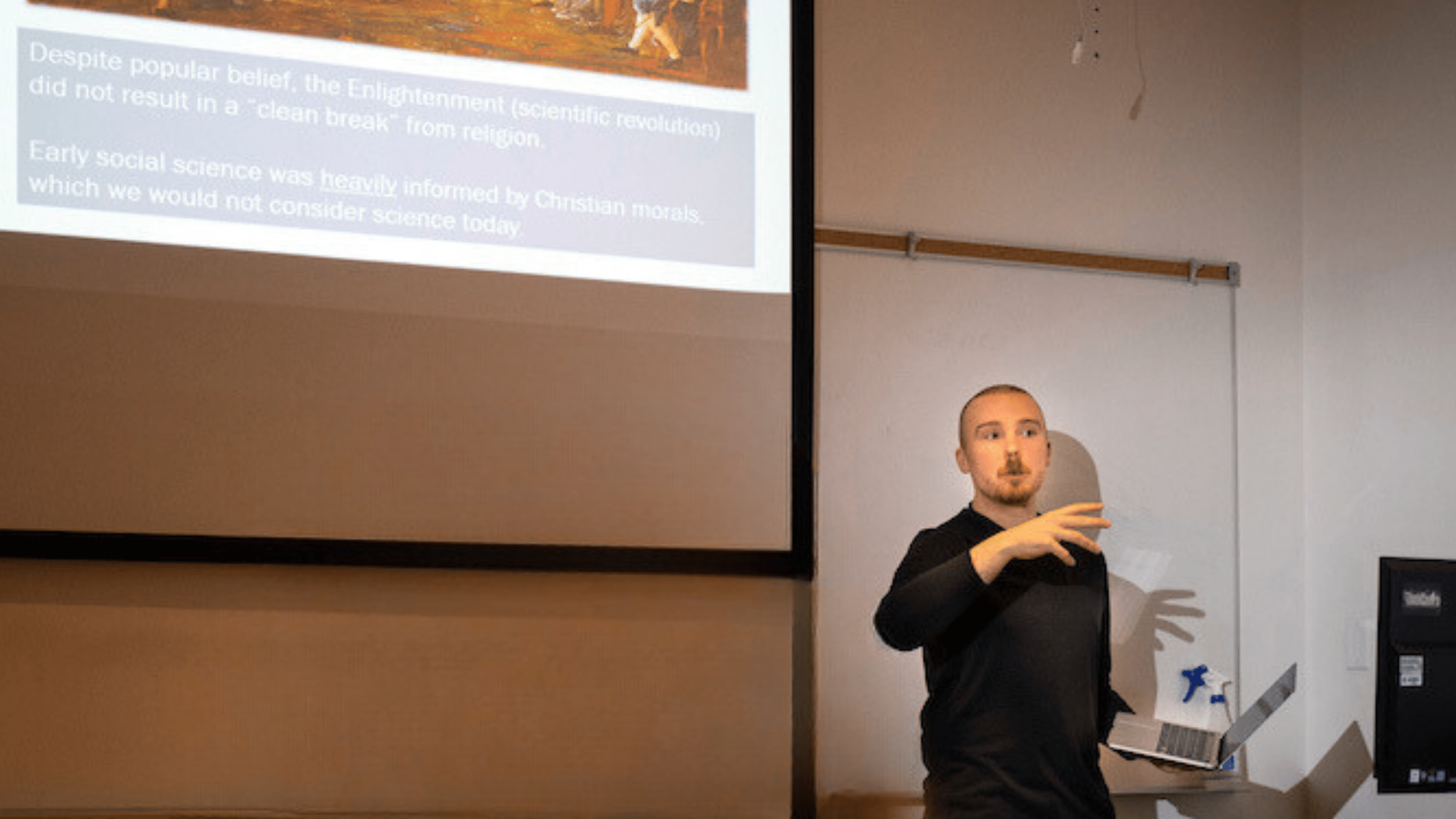Prisons are a central piece of colonial infrastructure. In Canada, Indigenous peoples comprise over 30 per cent of the prison population yet represent only 5 per cent of the general population. Many have noted the hypocrisy of the Canadian government impoverishing Indigenous communities through colonial policies and then incarcerating the people most affected by those policies.
Among the most contentious questions in criminology in Canada concerns whether Indigenized prison reforms are “decolonial.” Decolonization broadly means challenging or “undoing” colonialism and improving Indigenous peoples’ self-determination, sovereignty and material well-being. Some authors argue that decolonial efforts must improve prison conditions through culturally attuned resources. In contrast, others advance more radical positions, arguing that such reforms improve colonialism and ought to be opposed in favour of prison abolitionism.
Since 2016, I have been part of a research team called the University of Alberta Prison Project. Our team has interviewed nearly 800 incarcerated people in Western Canadian prisons, in which roughly 40 per cent identified as Indigenous. One important component of my research explores Indigenous peoples’ experiences with the “Indigenized” aspects of Canada’s prison system, such as courses teaching Indigenous cultures and colonial history, prison Elderships, ceremony in prison, and “healing lodges,” which are specialized prisons informed by aspects of Indigenous cultures and traditions.
While I understand the urge among some academics and activists to dismiss Indigenized programs as yet more government hypocrisy, responding to these initiatives requires caution and serious consideration, as academics do not typically represent incarcerated people, who are among the most marginalized groups in society. Such individuals also have a direct stake in what prison programs exist and how they operate. As a Métis prison scholar, I am concerned that academics writing on this topic have not displayed sufficient caution or nuance in their thinking or commentary about this situation.
A subset of Indigenous and non-Indigenous academics in Canada are among the strongest opponents of cultural prison programming. A growing body of peer-reviewed articles characterizes Indigenizing prisons as a “colonial” or “genocidal” practice, arguing that Indigenized teachings offered in prison “manipulate” incarcerated people into accepting an inauthentic Indigenous identity. One award-winning article dismisses Indigenized programs as a “Halloween costume” that incarcerated people adopt. For most of these scholars, decolonizing prisons is “impossible” because prisons are exclusively colonial institutions and reforms such as cultural programming can only expand the prison system and make colonialism more thorough and effective. Ultimately their policy position is that abolishing prisons is the only legitimate decolonial action.
Despite the ease with which these critics dismiss Indigenized programming, few studies have examined how these programs work or how incarcerated people experience them. The arguments of those who critique such developments are based almost exclusively on academic theories. In other words, scholars publish sweeping condemnations of cultural prison resources as foremost “colonial” or “genocidal” without centring Indigenous peoples’ perspectives. Our study, combined with an appreciation for Indigenous history and advocacy in this area, paints a strikingly different picture of Indigenizing prisons.
Indigenizing prisons as historical and ongoing resistance
Indigenized programming emerged from the prisoner-led Native Brotherhood – and later, Sisterhood – movement that started in 1958 at Stony Mountain Penitentiary in Manitoba. The movement sought to confront the “colonized personality” by celebrating Indigenous cultures in prison and encouraging healing and empowerment through ceremony, group therapy, support networks and cultural handicrafts, such as beadwork. In 1975, the movement formally called for creating in-prison initiatives, which serve as the foundation for modern Indigenized prison programming. The Canadian government has formalized cultural programs and healing lodges, but these initiatives have many flaws. Advocates and communities continue to fight for increased control over developing and operating Indigenization initiatives in prison.
Efforts to Indigenize prisons are undoubtedly partial and flawed, but they still represent over half a century of efforts to empower system-involved Indigenous peoples. Cultural programs are also a human right guaranteed by the Charter, as prisons are legally mandated to provide incarcerated people with spiritual accommodation. This ongoing struggle for Indigenous rights is further reflected in the Truth and Reconciliation Commission (TRC) and the National Inquiry into Missing and Murdered Indigenous Women and Girls (MMIWG), both of which recommend expanding and improving cultural prison resources and Indigenous-led healing lodges.
Indigenous experiences in prison
Academic critics sidestep the connection between cultural prison programs and Indigenous rights. Instead, they argue or imply that such programming imposes a false Indigenous identity on prisoners in a manner comparable to residential schools. My research team’s interviews with imprisoned people challenge these assumptions.
Indigenous participants explained how Indigenized programming helped them meaningfully connect with their culture or heritage, often for the first time. This sentiment was particularly apparent amongst people who had been removed from their community through the foster system, many of whom did not know their tribal background. Others had little or no previous contact with their culture due to the challenges of extreme poverty, gang-involvement, or homelessness.
Some participants expressed that the cultural resources in prison helped them overcome the stigma they felt about their Indigenous identity. These participants had initially viewed their marginalization and traumatic experiences as personal failures or failures of their community. Indigenized programming encouraged them to contextualize their struggles through the lens of colonial history and intergenerational trauma, helping them to be proud of their heritage. Indeed, it is unsettling that for a subset of our participants, it was in prison – a profoundly colonial institution – where they were first exposed to teachings about their culture and the scope of colonial violence experienced by their community.
Some participants specifically contrasted the empowerment they experienced through Indigenized resources against the attempted cultural erasure practiced in residential schools. Some of the residential school survivors we interviewed explained how the prison’s cultural resources, such as drumming, Elders, and pipe ceremonies, eased the harms of their colonial traumas.
Our Indigenous participants did criticize cultural programming, but those criticisms centred almost exclusively on how prison management prevents access to these resources. Some interviewees noted that certain staff members block them from using such resources, ridiculing Indigenous cultures and refusing to facilitate prayer or ceremony. They also explained how prisons often referred to “security concerns” to restrict cultural programs. Participants called for expanded Indigenized programming and for easier access. They also asked that staff members be trained on Indigenous issues and history.
Our findings suggest that incarcerated Indigenous people find cultural programming invaluable, but most have limited or no access to these resources. As such, prisons are regularly denying Indigenous people their right to spiritual accommodation.
Conclusion: decolonizing academic hubris
While prisons are deeply colonial institutions, they are not impervious to Indigenous resistance. Centring Indigenous perspectives suggests that Indigenizing prisons is an ongoing effort to empower the people most affected by Canada’s colonial policies. Decolonial scholars, by contrast, typically oppose Indigenizing prisons, arguing that the Canadian government introduced these “destructive” practices to further advance colonialism. I am not sure how to explain this disconnect. I am confident, however, that academic critics are overlooking substantial Indigenous knowledges and viewpoints.
Decolonial methods emphasize rigorous attention to context and relationships because Indigenous peoples are incredibly diverse. Their needs and interests differ significantly by culture, geography, and circumstances. In other words, decolonial research asks us to show humility and interact with Indigenous peoples precisely because academics do not know what is best for everyone.
Decolonial action is always fraught with tensions and shortcomings. The Native Brotherhood and Sisterhood recognized the immense challenge of dismantling the colonial prison system while addressing the urgent needs of those caught within it. Providing cultural supports for incarcerated people is a small but vital part of the broader movement toward safe decarceration and Indigenous self-determination and sovereignty.
This article summarizes two papers called “Decolonizing prisons: Indigenized programming and a critique of critical prison studies” and “Indigenizing prisons: a Canadian case study.”

